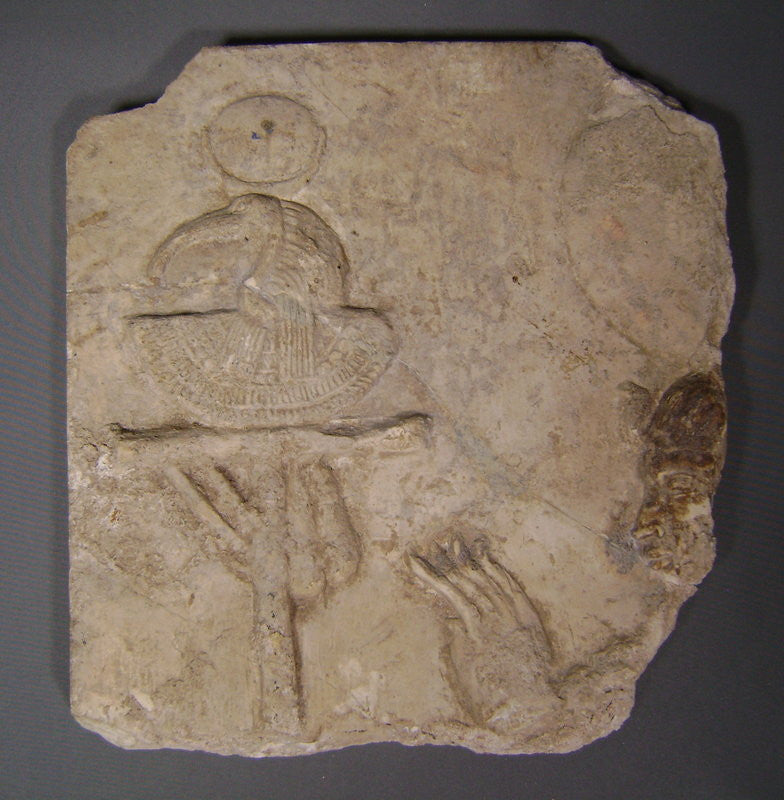
An Ancient Egyptian Limestone Relief Ex. Gustave Jequier
Regular price
$35,000.00
Sale
Beautiful Ancient Egyptian relief from the collection of Gustave Jéquier. This lovely limestone relief shows the head of Ibis headed Thoth wearing the lunar crescent on his head. On his left we see Ptah or scribe wearing a skull cap with ureaus. Over the head of Ptah/scribe we see what appears to be a large moon. This pieces measures approx 9.25" inches x 8.75" inches and was split in few sections, however now mended. Circa Late Period.
Thoth is perhaps one of the oldest gods of Ancient Egypt, though he is not a part of the famous Heliopolitan Ennead. He is one of the ten members of the dynasty of gods who ruled earth before the Turin Royal Canon or earthly kings. The primacy of Thoth is suggested in the fascinating story told by Plutarch (Isis and Osiris, 12) that Greek Hermes or Egyptian Thoth, won five extra days for the year by playing a game with Selene (moon). These five extra days became the birthdays for the deities Osiris, Horus, Seth, Isis, and Nephthys. As we know Thoth is the patron god of scribes and lord of the sacred writings, judge, legislator, recorder of decisions and pronouncements, arbiter of disputs and founder of temples. He is the personification of thought and restorer of order and harmony. The roots are certainly to be found in Ramesside Egypt starting with the Memphite Theology and on the walls of the Hibis temple.
Provenance: Collected by Gustave Jéquier (1868-1946)
Ex. William Bill Jamieson (1954-2011)
Galleria Delvecchio .… “is pleased to present a collection of Egyptian antiquities assembled by the celebrated Swiss Egyptologist Gustave Jéquier. Jéquier was born in 1868 in Neuchatel. He first studied in Paris under Gaston Maspero (1846-1916) and later went to Berlin before joining the de Morgan expedition to Persia, during which time he contributed to the discovery and decipherment of the code of Hammurabi. Gustave Jéquier was a giant in the field of Egyptology whose contributions are far too numerous to list here. He is best know for his association with the French Institute in Cairo which enabled him to engage in seminal research at the pyramid site of the Old Kingdom. He also completed the work begun at Abydos by his Swiss compatriot, [Henri] Eduard Naville (1844-1926). The two are considered to be Switzerland’s most preeminent Egyptologists. One of Jéquier’s most important discoveries was the 13th Dynasty pyramid of Khendjer. He wrote extensively on his history of Egyptian architecture, and published on philology and religion as well. Gustave Jéquier died in 1946 in the city in which he was born, and most of his collection was acquired by the University of Basel. The works of art presented here were given to a sibling who emigrated to the US in the late 1940’s; the collection later passed to their daughter, Jéquier’s niece.”